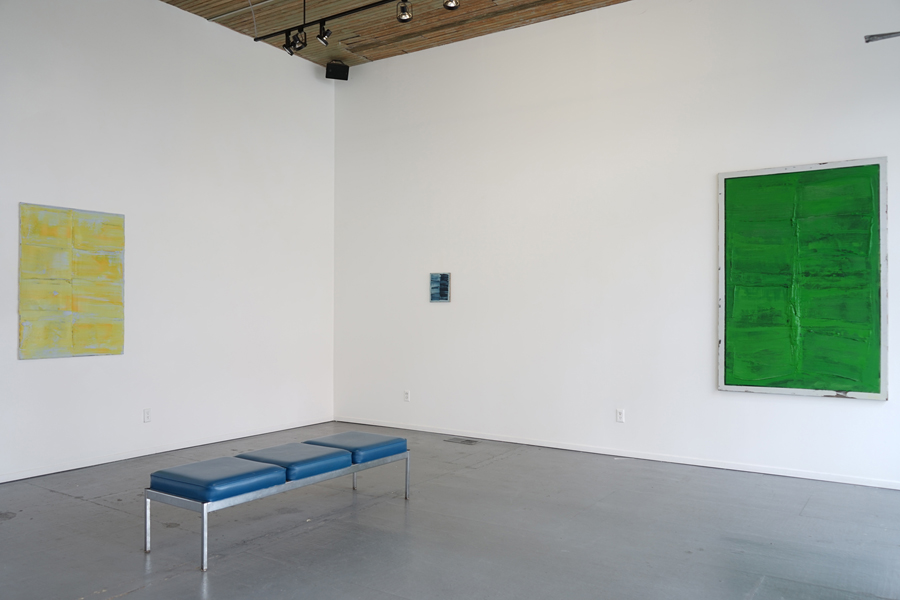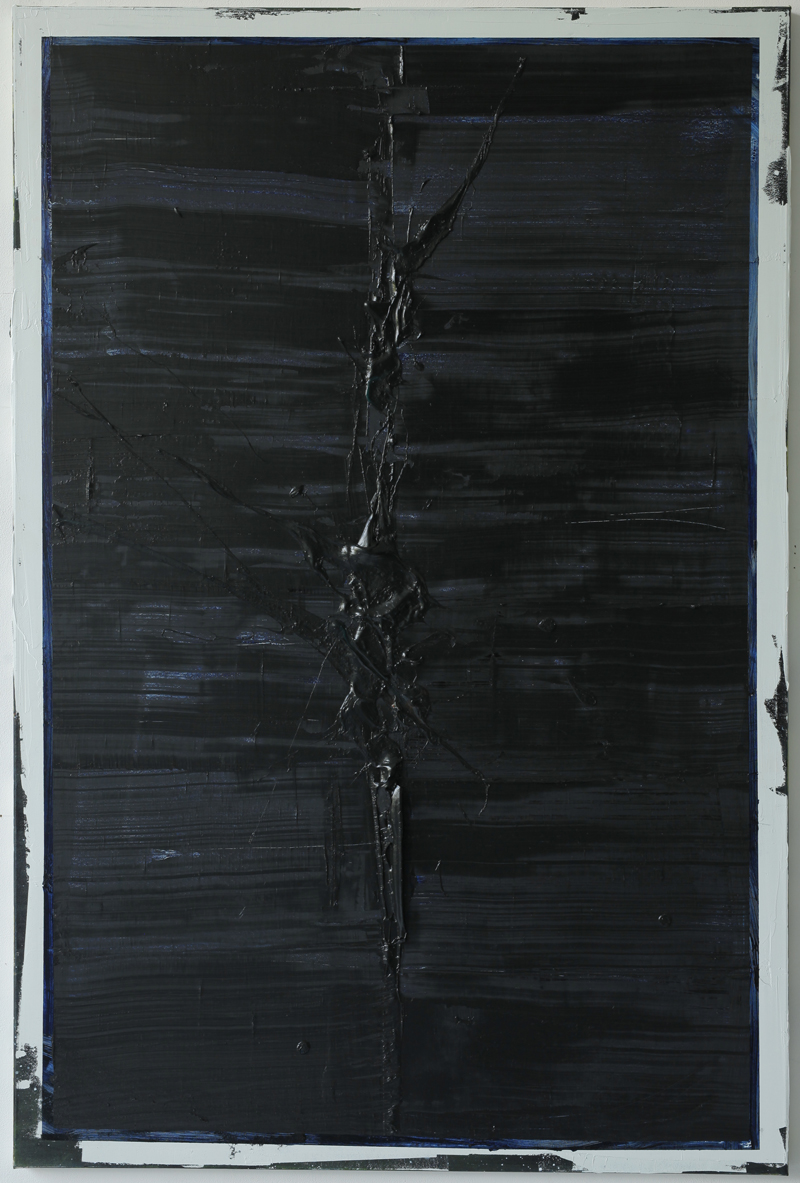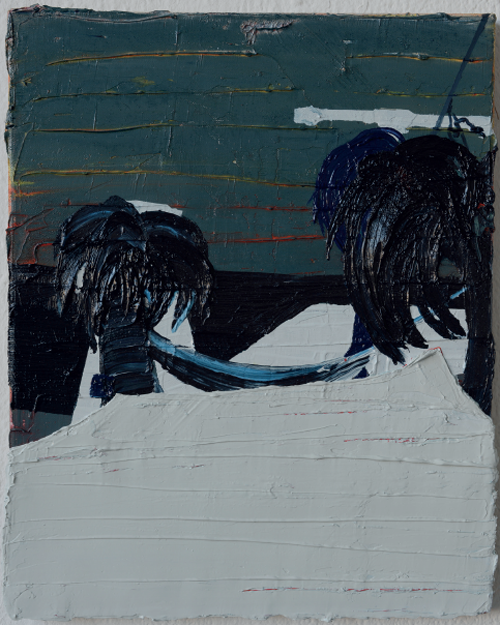
For his first solo exhibition in the U.S., “erase reverse” at Maus Contemporary, German artist Felix Becker presents a dozen works that could best be described as “pseudo-abstractions.” Rooted in a lineage that references gestural abstractionists like Jackson Pollock, as well as more minimal conceptualists like Robert Ryman, Becker’s works inhabit a well-trod territory that might be termed the in-between—simultaneously figurative and abstract.
Viewers encounter this tendency immediately, in the brooding presence of the predominantly black ohne Titel (vertebra 1), one of three works from his vertebrae series of 2017. At just under six by four feet, the work looms life-size, split at its center by a metaphorical spine. This anthropomorphism is even more apparent in the identically sized, oil on linen ohne Titel (vertebra 4), a study in viscous greens, its raised, slightly varying, repeated forms calling to mind the alienesque organisms of H.R. Giger.

Each of these larger works is bounded by a painted frame, an edge which encloses the work, preventing its expressiveness from stretching to the edges of the canvas. This trope seems characteristic of Becker’s paintings, appearing in most the pieces in the show. In some senses, it is quite effective, for whereas so much postwar abstraction either viewed the canvas as the idea of a limit (think here of how Pollock’s works destroyed the very idea of a “frame”), or simply sought to colonize the frame as an extension of the work (think, for example, of Howard Hodgkin), Becker’s paintings push toward their painterly limits even as they are physically contained.
In fact, his works are at their most subtle, and their most delicate, when he abandons this approach entirely. While he may not totally eschew the ideas of the figurative or perspective, Becker sometimes captures the dialectics of landscape in paint. In ohne Titel (Horizons 2), for example, five horizons are arrayed vertically across the picture plane, each pushing and pulling the viewer into a construct of pictorial space. Becker is creating the notion of sky, literally manufacturing a construct of representation. What differentiates Becker from Ryman, perhaps, is that it is not the function of the brush, the quality of the paint, or the repetitive nature of the gesture that are his core concerns. Instead, it is his fabrication of the idea of an illusion — or, as he titles it, the horizons. Ohne Titel (Horizons) shares a similar approach, and while neither colonize the frame as Hodgkin does, both push their materiality beyond the support’s limits, with mounds of paint literally bulging beyond each canvas’s edges.

The dialectic between figuration and abstraction becomes less conceptual, and more literal, in works like Ohne Titel (Paradise Freeze), which seems to depict two palm trees holding a hammock, suspended above a snow-covered field. A similar shape appears in ohne Title (Yellow Stego), that also suggests a figurative component of a purely abstract ground.
For an exercise in abstraction, then, Becker’s “erase reverse” is surprisingly grounded in figuration. It situates itself within dialogues on the body, on landscape, and on nature, calling to mind spines, horizons, field, animals, and more. It does this with a surprising quietude for a body of work based in gestural abstraction. Perhaps this is due, in part, to how Becker bounds his works, or perhaps it is the result of the attention required to truly delve deeply into these predominantly monochrome works. Whatever the case, “erase reverse” is an exhibition that may seem silent on the surface but is full of painterly energy and complexity.
“Felix Becker: erase reverse” is on view through February 24.




